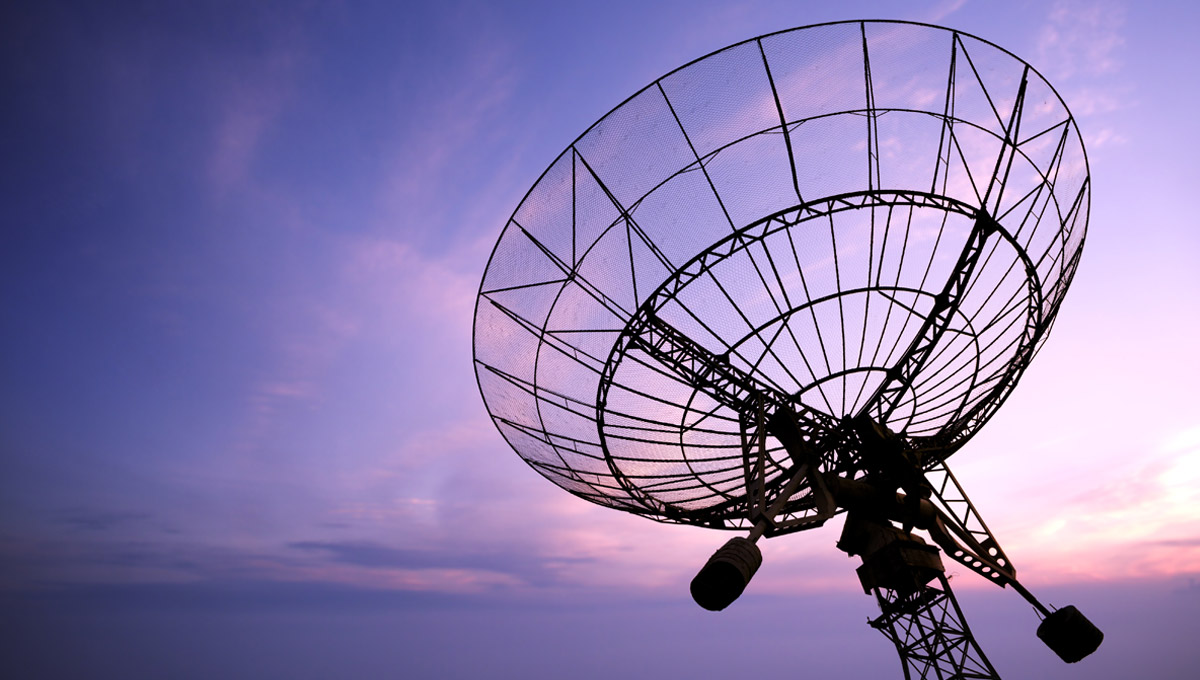Please click here to download the Newsletter as a PDF.
This JSA Highways and Logistics Newsletter focuses on key developments undertaken in the Indian roadways and logistics sector between April – June 2024.
Ministry of Road Transport and Highways issues annual performance data for financial year 2023-2024
The Ministry of Road Transport and Highways (“MoRTH”) on April 24, 2024, published its official data pertaining to the sector’s performance during financial year 2023-2024. As per the data made available, the financial year 2023-24 witnessed construction of 12,349 kms (twelve thousand three hundred and forty nine kilometers) of national highways and this was 20% higher than the national highway length constructed during financial year 2022-2023. The data also states that the country witnessed 9,642 kms (nine thousand six hundred and forty two kilometers) of lane augmentation and that this was 17% more than the lane augmentation which took place in financial year 2022-2023.
In terms of capital expenditure, MoRTH saw the highest ever capital expenditure during the financial year 2023-2024 with INR 3.01 lakh crore (Indian Rupees three point zero one lakh crore) capital expenditure (as compared to INR 2.41 lakh crore (Indian Rupees two point four one lakh crore) in financial year 2022-2023). There was positive news when it came to asset monetisation and private investment as well. Financial year 2023-2024 saw private investment to the tune of INR 34,805 crore (Indian Rupees thirty four thousand eight hundred and five crore) (which was 59% more than financial year 2022-2023) and highest ever quantity of asset monetisation with value of INR 40,314 crore (Indian Rupees forty thousand three hundred and fourteen crore) (which was 72% more than financial year 2022-2023).
Source: Summary Issued by MoRTH dated April 24, 2024
Indian Highways Management Company Limited invites Global Expression of Interest for implementation of Global Navigation Satellite System based electronic toll collection across national highways
The Government of India is planning to implement the ‘Global Navigation Satellite System’ (“GNSS”) based electronic toll collection (“ETC”) system along with the existing FASTag ecosystem. GNSS based ETC is a barrier free method of toll collection which allows toll users to pass through freely and they are charged, basis the distance travelled on the tolled highway stretch. In view of this, on June 7, 2024, Indian Highways Management Company Limited (“IHMCL”) invited global expression of interest from companies having experience in developing and delivering toll charger software which will form the base for GNSS based ETC system.
Through the implementation of the toll collection system, the government aims to facilitate smooth movement of vehicles plying on the national highways. Additionally, it aims to check on leakage and evasion of toll fees on the highways, thereby achieving enhanced efficiency and transparency in toll collection system across India. Initially, a hybrid model will be implemented where both radio frequency identification (RFID) based ETC and GNSS-based ETC will operate simultaneously. Recently, IHMCL also organised an international workshop on GNSS based ETC on June 25, 2024, in New Delhi. The workshop was participated by numerous industry and global experts who deliberated upon the implementation aspects of GNSS based ETC in India.
Source: Press Release dated June 7, 2024; Press Release dated June 25, 2024
Guidelines regarding descoping of construction of wayside amenities from scope of road contractors and adherence to approved layout plans
On March 11, 2022, the National Highways Authority of India (“NHAI”) had issued Standard Operating Procedure (“SOP”) regarding development of Wayside Amenities (“WSA”) along the national highways and expressways for award of wayside amenities. Thereafter, on July 5, 2023, a policy circular was issued for descoping of construction of WSA from the scope of road contractors. However, owing to the non-availability of WSA drawings which specifies the exact specification/plinth area in the concession/contract agreement, certain difficulties were being faced by the field officers in calculating the cost of WSA to be descoped from the concession/contract agreement.
Accordingly, NHAI has devised a mechanism under its policy circular dated June 11, 2024, which implements the calculating cost for descoping/withdrawal of construction of WSA in compliance with the relevant clauses of the concession/contract agreement. The mechanism and costing for descoping of WSA work for different modes of contract, i.e., engineering, procurement and construction (“EPC”) contract, hybrid annuity model (“HAM”)/build, operate, transfer (“BOT”) (Toll)/BOT(Annuity) is also laid down under the said policy circular.
Source: NHAI Policy Circular dated June 11, 2024
Clarification in relation to acceptance of goods and services tax audit report and payment of goods and services tax under change in law to the contractors and concessionaires
NHAI in its policy circular dated May 27, 2024, has issued the following clarifications in relation to payment of goods and services tax (“GST”) to the concessionaires/contractors:
- GST audit report and payment of GST under the change in law provision
In view of the change in law provision of the concession agreement/NHAI contract, concessionaires/contractors are required to discharge the liability of GST since the introduction of GST Act, 2017. Accordingly, the aforesaid policy circular sets out the following requirements in relation to GST compliance:
-
- Timeline for GST audit: The GST audit must be completed within the timeline specified in the policy circular. The concessionaires/contractors must submit the relevant information and documents to the GST auditor to complete the GST audit.
- Methodology: NHAI has outlined the following steps to streamline the acceptance of GST audit report and payment of GST to the concessionaires/contractors:
- after completion of the GST audit report (Interim/Final), the GST audit report will be forwarded to the concessionaire/contractor for acceptance;
- concessionaire/contractor will submit acceptance within 7 (seven) days;
- upon receipt of acceptance from the concessionaire/contractor, an ‘in-principal approval’ will be obtained by the GST Cell within 3 (three) working days from the competent authority;
- upon receipt of the ‘in-principal approval’, a letter will be issued by the GST Cell immediately to the Project Implementation Unit (“PIU”) along with the GST audit report;
- PIU will seek approval from the regional office (“RO”) (if any) and release ad-hoc payment of 90% as per the concession agreement/contract upon receipt of the auditor’s report, within 3 (three) working days;
- after making the ad-hoc payment, observations on the GST audit report by the Project Director (“PD“)/Authority Engineer (“AE”)/Independent Engineer (“IE”), if any, will be forwarded to the GST Cell within 15 (fifteen) days of issuance of the ‘in-principal approval’. If no observations are provided, the GST audit report will be deemed to be accepted by NHAI authorities and the balance 10% will be released by PIU; and
- upon completion of the project, a final audit report will be sent to the GST Cell immediately by the PD.
- Clarification regarding monthly payment of GST to consultants/contractors/service providers/other vendors: NHAI has also asked the authorities to implement its earlier policy circulars dated November 14, 2017, and September 22, 2020, wherein NHAI had instructed the release of GST amount claimed by the concessionaires/contractors along with their running bills after obtaining proof of deposit of GST. This clarification has been issued as several PIUs had not adhered to the said procedure for payment of GST amount.
Source: NHAI Policy Circular dated May 27, 2024
NHAI establishes detailed project report cell for national highway projects
NHAI, vide policy circular dated May 24, 2024, proposed the establishment of a dedicated cell at its headquarters for reviewing of Detailed Project Reports (“DPR”) (“DPR Cell”) related to national highways to ensure safety, reliability and quality of national highways. DPR Cell was established on June 27, 2024. The said policy circular, inter alia, lays down the roles and responsibilities of DPR Cell, structure of DPR Cell, the roles and responsibilities of DPR experts, procedure for selection of such DPR experts, the governance mechanism and the process flow of DPR Cell. Some of the important aspects of DPR Cell are discussed below:
- Roles and responsibilities of DPR Cell:
DPR Cell will be performing the following key functions:
-
- develop mechanisms for and undertake: (i) complete monitoring of DPR; (ii) uniformity in review of DPR; and (iii) preparation of quality and accurate DPRs to enable development of world class national highways;
- examine the bid documents and technical schedules of national highway projects;
- evaluate cost estimates for project basis the design features of the project;
- assist in planning pre-construction activities;
- incorporate the project with the highway information model software;
- undertake site visits to evaluate proposals of DPR and design consultants; and
- suggest new practices to enhance quality output from the implementation of DPR related to a project.
- Structure of DPR Cell
DPR Cell is established under Member (Projects), NHAI who will be the chairman and will have a team of 40 (forty) members. The team will comprise of 5 (five) principal DPR experts (which may be increased or decreased as per the requirement) and various domain experts for road safety, traffic, land acquisition, bridges, tunnels, geotechnical experts, senior highway experts and forest specialists, who will be engaged as consultants on retainership basis.
Further, DPR Cell will have full time employees (mentioned below in hierarchy) and will perform roles and responsibilities, as follows:
-
- the chief general manager /general manager will be responsible for empanelment of expert and performance monitoring of DPR Cell team as per the identified key performance indicators;
- the Deputy General Manager will be responsible for monitoring all activities related to the DPR Cell management; and
- the manager/deputy manager will be responsible for, amongst other things, management of DPR experts/empaneled experts, allocation of projects to DPR experts, coordination with field officers in ROs/PDs, Technical Division (Headquarters) and experts, progress monitoring of all DPR projects.
- Governance Mechanism
The functions/reporting and review of the DPR Cell will be monitored in the following manner:
-
- quarterly impact review to CGM and members;
- monthly presentation to EC;
- monthly meeting with Technical Division/ROs/PDs; and
- monitoring and ensuring site visits of DPR Cell experts.
Monitoring of DPR Cell functioning and supporting will be done through an independent third-party support system using ‘Datalake’ portal, where periodic reports can be submitted to the chairman and members, or delays can be raised to the member (Projects). Third party support system will directly report to the member (Projects) through chief general manager/general manager.
Source: NHAI Policy Circular dated May 24, 2024; Press Release dated June 27, 2024
Guidelines for monitoring of projects and issuance of provisional completion and completion certificates for EPC/HAM/BOT contracts
NHAI in its policy circular dated May 24, 2024, has issued guidelines for proper monitoring of projects and issuance of Provisional Completion Certificate (“PCC”) and Completion Certificate (“CC”) to the concessionaires/contractors under the concessionaire agreement. NHAI observed the following non-adherence in monitoring of project and issuance of PCC/CC: (a) AE and RO/PD officials are not supervising the work and tests on completion in several cases which lead to incorrect issuance of PCC/CC; and (b) such tests on completion and other compliances were not being submitted in different formats. Procedurally, to obtain PCC/CC from NHAI, the concessionaire/contractor make request to the IE to conduct tests as per the provisions of the concession agreement and the IE/AE also inform the PD/RO, NHAI to witness the tests.
In view of the above, NHAI has issued the below mentioned guidelines to be followed for monitoring and issuance of PCC/CC:
- AE/IE are required to prepare a detailed checklist (in the format provided in the policy circular) and the concession agreement. This checklist will have to be updated from time to time upon approval of various drawings/design and progress of work;
- RO/PD are required to review the checklist during the site visit along with routine tests to be conducted at site and laboratory;
- 3 (three) months prior to the probable issuance of PCC/CC, RO/PD will hold a meeting and site visit to assess the preparedness of site for the issuance of PCC/CC to the concessionaire; and
- PCC/CC can be issued to the concessionaire/contractor once all the items in the checklist and contractual provisions are successfully complied and the tests on completion are successful.
The details mentioned in the checklist format can vary from contract to contract depending on the facts and circumstances.
Source: NHAI Policy Circular dated May 24, 2024
NHAI organises workshop for implementation of insurance security bond for NHAI contracts
NHAI, on May 15, 2024, organised a workshop to encourage concessionaires and insurance companies to adopt insurance security bond (“ISB”) as a form of performance security and bid security. This was organised after MoRTH, on March 15, 2024, amended the model concession agreement for BOT (Toll) projects permitting the concessionaires to furnish performance security in the form of an ISB issued by an insurance company authorised by Insurance Regulatory and Development Authority of India. As of May 15, 2024, NHAI has received 164 (one hundred and sixty four) insurances consisting of 20 (twenty) ISB for performance security and 144 (one hundred and forty-four) ISB for bid securities. The attendees of the workshop deliberated upon various challenges in adoption of ISB and the possible measures that can be implemented to ensure for faster adoption of ISB.
Source: Press Release dated May 15, 2024
SOP issued for implementation of ETC system and operation and maintenance services at national highway fee plazas through system integrators empaneled with IHMCL
NHAI, on January 17, 2022, had issued a policy circular which provided that the implementation of ETC system at national highway fee plazas will be carried out by the system integrators (“SI”) which are only empaneled by IHMCL. Therefore, the concerned concessionaire/EPC contractors were required to select the SI solely from the empaneled list for ETC infrastructure installation in relation to any new project and/or for extending any existing contract for operation and maintenance services.
However, NHAI noticed non-compliance of the aforementioned policy circular by the concessionaires/contractors and accordingly has issued SOP under policy circular dated May 10, 2024, to ensure that only empaneled SIs are involved by the concessionaires/contractors:
- the EPC contractor/concessionaire of the project will submit 3 (three) names from the empaneled list to PD;
- PD will recommend the name(s) of SI to RO for approval after ensuring that the same is/are empaneled by IHMCL and their performance is generally good at fee plazas;
- thereafter, RO will approve SI after being satisfied regarding SI’s performance in general and ensuring that SI is empaneled by IHMCL as on the date of approval; and
- in case RO is not satisfied with SI proposed by EPC contractor/concessionaire/PD, RO will furnish reason to the contractor/concessionaire with copy to IHMCL. In such case, EPC contractor/concessionaire will submit a revised panel of 3 (three) names for approval of RO.
Source: NHAI Policy Circular dated May 10, 2024
SOP issued for handling and monitoring of land acquisition arbitration and court cases
In order to streamline the massive litigations in land acquisition related issues, NHAI, on April 25, 2024, issued a policy circular which provides SOP for the land arbitration and court cases. In SOP, various modules have been developed on the ‘Datalake’ portal specifically to deal with land acquisition litigations. The portal/ modules enable the users to do the following:
- empanelment of Advocates (individual or firm) by RO, NHAI for land arbitration;
- allocation of arbitration/court cases by PIU and approval of advocate at RO level;
- filling in basic details of the cases by advocates, such as type of issue, date of notice, master case number, hearing status of the case;
- raising of bills by advocates for payment against their services in the arbitration/court matter by submitting invoice through the portal;
- generation of different case reports by PIUs/ROs/HQ for monitoring purposes; and
- accessing repository of orders passed by the courts for referencing.
These modules have been in effect from April 26, 2024, and the processing of all activities listed above, and other ancillary activities provided in SOP related to land acquisition arbitration and court cases will have to be mandatorily done through the portal.
Source: NHAI Policy Circular dated April 25, 2024
This Newsletter has been prepared by:

Vishnu Sudarsan |

Ashish Suman |

Kartikeya GS |

Ayan Sinha |
Shruti Maheshwari |
For more details, please contact [email protected]














